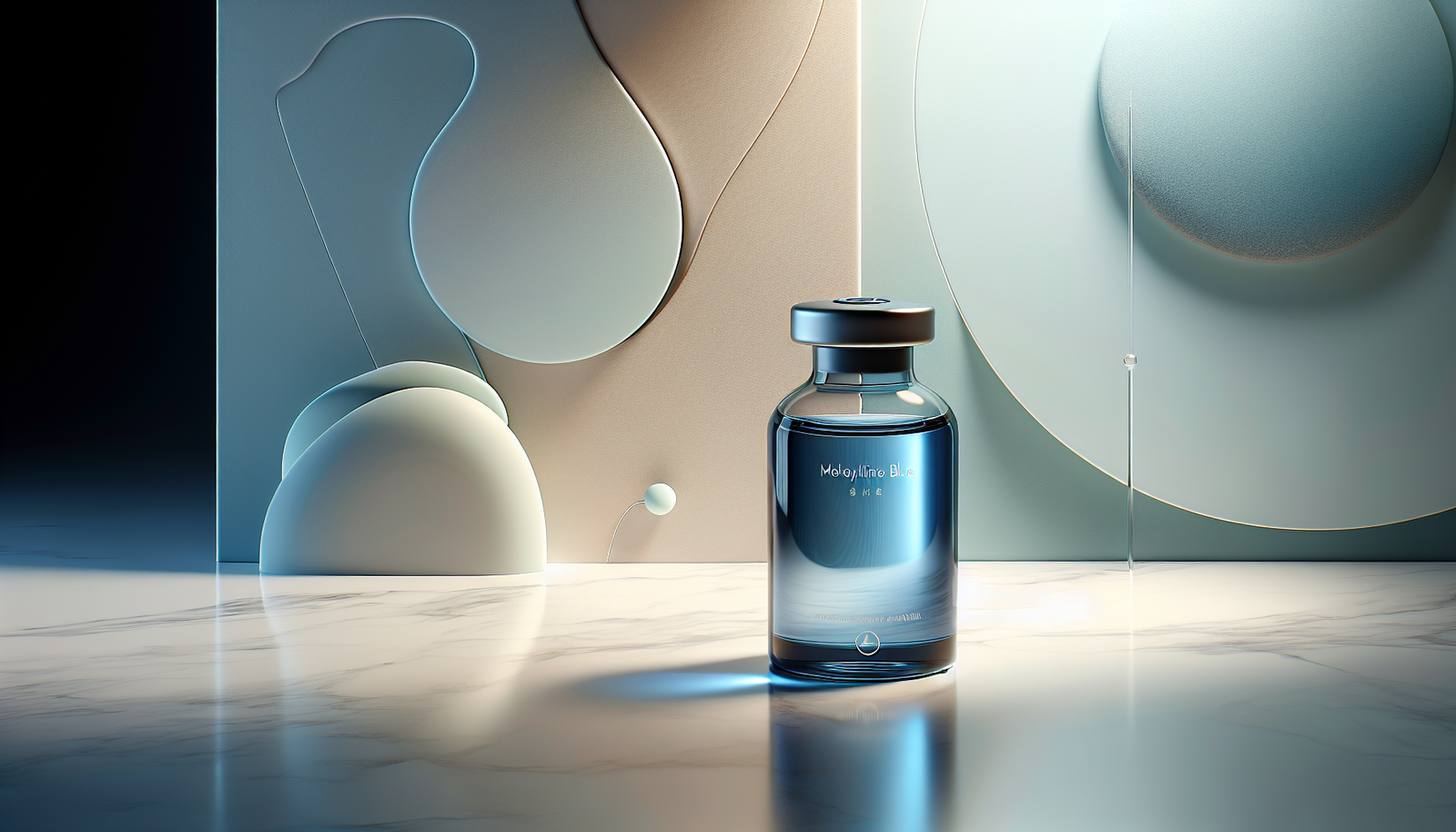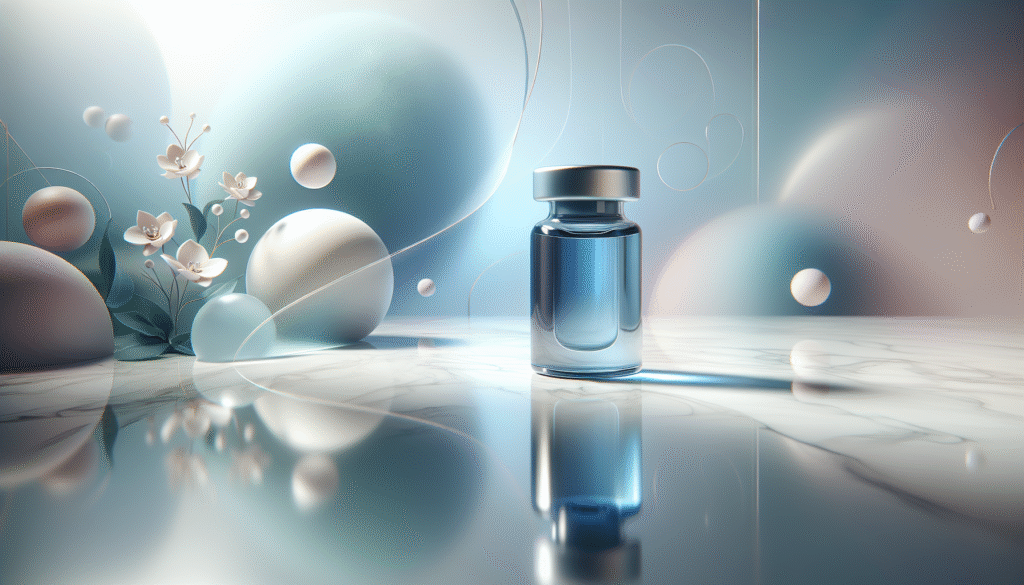
What role does Methylene Blue play in the evolution of aesthetic medicine? This intriguing compound, once primarily recognized for its historical uses in medicine and biology, is now emerging as a notable player in the field of aesthetic treatments.

Understanding Methylene Blue
Methylene Blue, a synthetic dye, has its roots in the late 19th century. Initially used for staining microorganisms in laboratory settings, it was later identified for its potential therapeutic benefits. This dye has a unique chemical structure that allows it to absorb light in a specific manner, contributing to its various applications in medicine.
Methylene Blue’s properties have attracted the attention of medical professionals in recent years. This article will unpack the multifaceted roles it plays in aesthetic medicine, focusing on its applications, benefits, and any associated risks.
Historical Context and Uses
Historically, Methylene Blue has been employed to treat conditions like methemoglobinemia—a blood disorder—and as a treatment for certain infections. Its use has expanded over the years, and recent developments have spotlighted Methylene Blue in the realm of aesthetic medicine.
Properties of Methylene Blue
Methylene Blue is known for its antioxidant and anti-inflammatory properties. It has the ability to enhance cellular metabolism and improve mitochondrial function, which can be quite advantageous for various aesthetic treatments.
Antioxidant Effects
Oxidative stress is a hallmark of aging and skin damage. Methylene Blue acts as an antioxidant, neutralizing free radicals that contribute to skin aging. By mitigating these effects, it may reduce the visibility of fine lines and enhance skin texture and overall appearance.
Anti-Inflammatory Properties
The anti-inflammatory effects of Methylene Blue are also noteworthy. Skin conditions that involve inflammation can benefit from topical applications of this compound, potentially leading to reduced redness and irritation.
Applications of Methylene Blue in Aesthetic Medicine
When considering the applications of Methylene Blue in aesthetic medicine, one sees its use in several innovative procedures.
Skin Rejuvenation
Methylene Blue can be utilized in skin rejuvenation treatments. This application often involves laser therapy, where Methylene Blue serves as a photosensitizer. The dye absorbs laser light, enhancing the treatment’s overall effect.
Mechanism of Action
In laser treatments, Methylene Blue’s photosensitizing properties allow it to enhance the penetration depth of laser energy, leading to better results for skin rejuvenation. The application can improve skin elasticity, tone, and texture.
Melasma Treatment
Melasma, a common skin condition characterized by dark patches, presents a challenge in aesthetic medicine. Methylene Blue has shown promise in treating this condition through its ability to modulate melanin production.
Efficacy and Safety
Clinical studies suggest that Methylene Blue can be effective in reducing pigmentation associated with melasma. It can be incorporated into topical formulations or utilized in conjunction with chemical peels to enhance its effects.
Acne Treatment
The anti-inflammatory properties of Methylene Blue also make it a consideration for acne treatment. Its capacity to reduce inflammation can lead to improved outcomes for individuals suffering from acne.
Application Protocols
For acne treatment, Methylene Blue can be formulated into gels or topical creams. This application can be done in conjunction with other treatment modalities to maximize the efficacy of acne management protocols.
Hair Restoration
Recent developments have seen Methylene Blue being explored as a treatment for hair loss. Preliminary research has indicated that the compound may promote hair growth by improving blood circulation to hair follicles.
Mechanism in Hair Growth
By addressing oxidative stress and enhancing cellular metabolism, Methylene Blue may support the health of hair follicles. This advantageous effect opens avenues for non-invasive hair restoration therapies in aesthetic settings.
Safety and Side Effects
While Methylene Blue shows promise across various aesthetic applications, an understanding of its safety profile is crucial. Like any compound used in medical treatments, it has potential side effects and contraindications.
Common Side Effects
Most commonly reported side effects of Methylene Blue include:
- Skin irritation
- Allergic reactions
- Temporary discoloration
These side effects may vary based on individual sensitivities and the method of application.
Contraindications
Patients with a history of hypersensitivity to Methylene Blue or related compounds should avoid its use. Additionally, individuals on certain medications, such as selective serotonin reuptake inhibitors (SSRIs), may be advised against using Methylene Blue due to the risk of serotonin syndrome.
Recommendations for Use
To mitigate risks, it is recommended that Methylene Blue be administered under professional supervision. Proper consultation before undergoing treatment is critical to ensure the safety and appropriateness of its use in aesthetic procedures.
The Future of Methylene Blue in Aesthetic Medicine
The growing interest in Methylene Blue reflects broader shifts in aesthetic medicine. The trend towards using biologically active compounds in treatments demonstrates an eagerness for effective, science-driven approaches to aesthetic goals.
Ongoing Research and Development
Ongoing research into the efficacy of Methylene Blue in aesthetic procedures is crucial. Clinical trials will provide additional insights into optimal formulations, dosages, and specific treatment protocols.
Potential for Combination Therapies
Combining Methylene Blue with other treatments may unlock enhanced outcomes. For instance, pairing it with hyaluronic acid for facial rejuvenation could create a multi-faceted approach, maximizing benefits for patients.

Conclusion
Methylene Blue’s historical roots in medicine have paved the way for its exploration in aesthetic applications. From skin rejuvenation to acne management and hair restoration, this compound is redefining possibilities in aesthetic medicine.
As you contemplate the future of your aesthetic journey, keep an eye on Methylene Blue and its potential to offer innovative approaches to enhancing your natural beauty. It is crucial, however, to ensure that your treatments are based on robust clinical evidence and administered by qualified professionals. Your well-being and satisfaction should always remain the top priority.